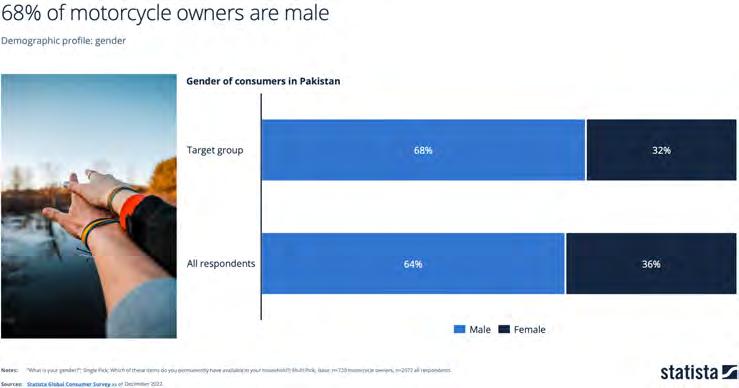
12 minute read
Looking to the future, Chinese are giving a new twist to a classic two-wheeler
By Daniyal Ahmad
Improvise. Adapt. Overcome. The famous, and often derided, Bear Grylls meme might often be overlooked by you and I whilst we scroll through our social media. However, it looks like Chinese two-wheel manufacturers have chosen it as their new mantra in their perpetual fight to dethrone Atlas Honda. Context is important, and the only con- text needed for the two-wheeler market is that Honda Atlas is essentially the market. However, where there’s money involved you cannot simply C’est La Vie. The smaller players have banded around what seems to be the newest tool in their arsenal to correct this imbalance, and that is the scooter. Or rather, the return of the scooter. And, with an electric twist this time around.
Advertisement
Don’t believe us? Evee Bikes and Road Prince will be launching their electric scooters this month. Metro Motorbikes released theirs last month. Profit did a count, and we found there to be almost as many electric scooters as there were companies.
Fun fact; surprisingly, the vast majority, but not all, claimed to be the first in Pakistan to have released them.
However, there is one major player conspicuously missing in the list of companies that will be rolling these out: Atlas Honda. Why is this important? Because this looks like it might be a lifeline that the Chinese brands may have grabbed.
What do we mean here? The Statista Global Consumer Survey (December, 2022) puts the gender breakdown of motorcycle owners in Pakistan at a split of 68:32 in favour of males. And, that is where we have our scooters. “There is a social change going on in Pakistan, people are now more accepting of women driving on their own. Cars, given their current prices, are not affordable for everyone. At the end of the day if a woman has to go to her workplace, or go to her college etc, and she doesn’t have the facility of a car, then the scooter is the next best option,” Muhammad Salman, Director of Sales and Marketing at Road Prince, tells Profit

All of this might sound rudimentary to anyone with an interest in the space. However, to those not in the know, and even some that are, there are a lot of questions that all of this raises. Firstly, Atlas Honda has badly beaten the rest of the industry and forced them to double down on a scooter when their energy could be better directed at trying to beat the CD-70 still. Why not just pursue the female market with conventional bikes? Is the stereotype genuine? Is ‘electric’ just a buzzword in this space or is there something more happening. Doubling down on electric scooters is a simple decision that somehow raises more questions than answers in a market that has been starving for something beyond the traditional CD-70.
First things first, let’s look at the combatants that we have in the two-wheeler space to see why Chinese manufacturers are looking to innovate in the space.
David vs Goliath
To understand why smaller companies are looking to reintroduce a relic with a new spin in the ongoing episode of David vs Goliath in Pakistan’s two-wheeler market, it is important to understand who our contenders are. There are two contenders: Atlas Honda, and the rest of the entire two-wheeler industry combined. Looking at 7MFY23 sales figures provided by the Pakistan Automotive Manufacturers Association (PAMA), the company accounts for 85% of all sales in the two-wheeler market.
Atlas Honda’s dominance is not a new development. Profit looked at sales figures provided by PAMA from FY 2007/8 till FY 2021/22, and Honda was the single largest player every year. Its annual production was also greater than the sum of all other players combined, every single year. On average, it produced 455,911 more motorcycles than all its competitors combined. This reached a peak in FY 2021-22 where it produced 940,056 more units than all other competitors combined whilst at its lowest in FY 2008-09, it still produced 221,592 more units.
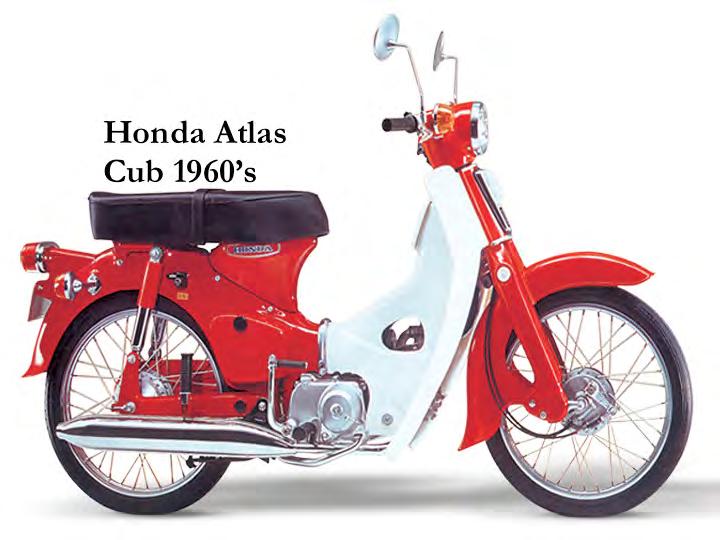
Dominance is an understatement. However, necessity is the mother of innovation. Marketing in our context.
Can’t they just advertise CD-70s to women as well?
“Based on the comments and my interaction with women on my social media page, women are inclined towards scooters. There’s a sentiment in the market that’s led them to believe that motorcycles are heavy, and are difficult to handle,” Zenith Irfan, Motorcycle Influencer, explains.
“It’s a common occurrence that women want to buy motorcycles to reduce the cost of their daily commute, their families are very hesitant. I have observed most families are more willing to compromise on the females of their households buying scooters than motorcycles,” Payyam-e-Khurram, Founder and President of Pink Riders Pakistan, tells Profit

“Brands have also capitalised on this. Scooters are on average 15 kg lighter, they’re colourful, relatively more appealing, and unique. If the price differential between a motorcycle and a scooter is negligible then I believe women will primarily opt for scooters, not because they are female vehicles but because they are designed to be more appealing for them,” Khurram continues. “Some women struggle with motorcycles when they start-off. If the learning curve is steep then scooters offer an easier alternative. They’re lighter, and also have automatic transmission,” Irfan tells Profit Do these perceptions align with the companies’ sales data?
“The primary customers are women. This is something that we’ve seen in our sales data. All the queries that we have received till now wherever we’ve had our product activations have been from women,” Salman says. Profit also called up local dealers in and around Lahore to get an understanding of the demographics of Scooter sales. Most dealers did acknowledge that there had been an uptick in male sales, however, they also admitted to the ratio being skewed 70:30 in favour of the women
The best part is no Honda. Game, set, match.
Zenith Irfan, Motorcycle Influencer
What’s the market that’s up for grabs here?
Pakistan’s female labour force grew from 13 million to 16 million between 2011 and 2019 based on data provided by the Pakistan Labour Force Survey. Now that may not seem like a lot, but it is indicative of a larger trend. Female labour force participation has risen from 6.1% in 1961 24.5% in 2021 based on data provided by the International Labour Organization.
“It will take a lot of time and resources to develop and execute public transport properly. An immediate solution is that you give her a bike, and she can become independent and/or support her family,” Irfan tells Profit. The Chinese manufacturers seemed to have listened, and thankfully so. There is a market for them to tap into.
However, there are secondary benefits scooters provide: They’re like a gateway drug of sorts for customers to eventually move up the ladder towards a motorcycle.
The Gateway Drug
“If a woman buys a scooter then there’s a 50% chance that she will buy a conventional motorcycle a year or two later,” Khurram tells Profit Why is that? “What happens is that the family usually becomes accustomed to seeing their daughter ride a scooter, and become good at it so they decide to help her get a motorcycle. This is particularly true because scooters have their own issues relative to a motorcycle that only become apparent over time. They lack the same range of spare parts, the mechanics are harder to find, and repairs are overall costlier,” Khurram continues.
And, what better company to buy your first motorcycle than the company where you bought your first two-wheeler? Theoretically, at least. “It’s very clever, and I would say a very effective way to target them because Atlas Honda and Suzuki are not accommodating female riders. They don’t. Not even the slightest,” Irfan explains when comparing the marketing strategies employed by the Chinese manufacturers to promote their scooters.
Given all this, you would imagine that Chinese manufacturers would have plastered female advertisements all over the country in order to drive this point home, but that does not seem to be the case. “We’re going to advertise this as unisex in all our upcoming marketing because we don’t want to just label it as a female vehicle. As a company we want both men and women to be using our vehicle,” Salman tells Profit
Given the aforementioned sales data, Profit cannot identify any reason why Chinese manufacturers would want to undertake the Herculean task of prying away customers from Atlas Honda using a new product when they could not do so with their bread and butter. All the while not capitalising on a market that is ready for the taking, and not served at all. And to add icing to the cake, why invest in electrifying a vehicle that male customers have abstained from for so long when you could just simply electrify their own iterations of the CD-70? You know the product that clocked upwards of 800,000 sales based on Honda Atlas’ financial report for 2021 for a whopping 44% of total industry sales during that time.
So what is the obsession with the unisex tag? Understanding this first requires a look at how the scooter became associated with the fairer sex to begin with.
How did scooters even become a vehicle associated with women?
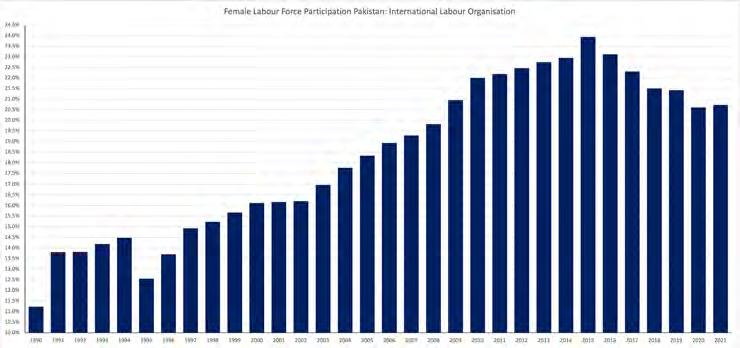
“We as a community have developed that motorcycles are for men, and scooters are for women. It’s established and entrenched,” Khurram elaborates. This was not always the case though. Most of our perceptions of scooters go back to one singular vehicle: The Vespa. And, rightfully so. However, more so than the Vespa, surprisingly, the history of why the scooter died out goes back again to the giant of the two-wheeler market.
But first, let’s talk about the Vespa.
Up until the 1960s, motorcycles were considered an upwardly mobile means of transportation. They were driven by government officers, bankers, and other professionals and considered a sign of doing well in life. A local company called Khawaja Autos brought the Italian scooter brand Vespa to Pakistan. Affordable, slow, and decidedly un-sexy, the Vespa was the every-man vehicle. The Vespa was such a runaway success, both domestically and globally, that Honda Atlas’ first vehicle in Pakistan was a Cub-styled motorcycle.
“The original product that we launched was based on a Cub style. A Cub style includes a basket in the front, and a fuel tank underneath the seat,” Afaq Ahmed, Vice President of Marketing at Atlas Honda, tells Profit. It was by all means a scooter. Ahmed confirms this as well in conversation with Profit. It benefited from the goodwill the Vespa had built. The scooter until then was very much a unisex vehicle. However, things changed as the decades progressed until we had the gendered opinion of the two models that we have today.
So, what happened?
“Vespa is the Mercedes Benz of scooters. It is a very high-end product. It was designed in the post war years and there was encouragement for women to work, so this product was especially designed keeping that in mind. It then picked up and became a global trend. Our research indicates that the vast majority of demand for Vespas in Pakistan is from men,” Fahad Iqbal, Director at Ravi Automobile, tells Profit. However, Iqbal accepts that Vespas are a luxury, and thus their unisex appeal is limited to it within the scooter market.
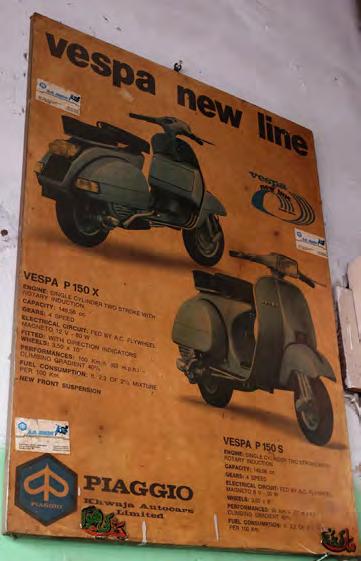
“I relate the perception of scooters as vehicles for females to the influence and penetration of Indian media in our country. This is my personal take on it. If you look at global advertisements, or European advertisements, scooters are absolutely masculine products,” Iqbal explains.
“The three big companies in India projected the scooter as a female product and the motorcycle as a male product in order to capture the maximum market share in their two-wheeler market. I think that has played a critical role in maintaining the image of the scooter as a female product in Pakistan too,” Iqbal continues. Talking about Honda’s decision to abandon the scooter, Iqbal says, “I don’t think there was an issue of people choosing the motorcycle over the Cub. Honda just progressed to another design. If Honda had stuck to the Cub, then it’s likely that all the CD-70s we see would instead be Cub”.
Atlas Honda’s decision to abandon the Cub, and switch to the motorcycles that we know today, however, had significant ramifications. They were also borne out of practical reasons, which might go back to Iqbal’s point about the influence across the border shaping customer demand.
“Yahama, and Suzuki introduced the utility motorcycle which allowed them to capture the North (Punjab). The Cub could only sustain itself in Karachi and Hyderabad. Honda doubled down on the CD-70 to capture the North,” Ahmed says. As part of the battle with Suzuki and Yamaha, Atlas Honda also made its motorcycles aggressively masculine in a bid to dislodge Suzuki and Yamaha. Profit has already covered this battle, and the reasons behind this previously.
Read more: The motorcycle story

The obsession with the unisex tag
Now that you know how the scooter became associated with women, the end result is that it led to low volumes. “When the government finalised their Deletion Program in 1986, we had to decide which models we had to include in that because the government mandated deletion up to 85%. Deletion required significant amounts of investment, and so we decided to include those models that had sizable volumes and enjoyed nation-wide acceptance. We shifted towards deletion for the utility motorcycles, and discontinued the Cub,” Ahmed continues.
It was also around this time that Khawaja Autos began to double down on three-wheeler scooters, and thereby straying away from the conventional two-wheeler market. They also ran into their own problems that are beyond the scope of this article. However, the association with only females, followed by the end of the Vespa and the Cub in Pakistan was the nail in the coffin for the scooter.
The reasons why companies will want to stray away from the gender binary this time around is thus apparent. They know they can continue selling to women, whilst still branding themselves as unisex. Will this dampen potential sales? Yes, women constitute a larger market this time around based on the aforementioned labour force participation data. Not doubling down on them is a sacrifice they will have to make to ensure they can have mass appeal this time around. And this is very important. This bleeds into our final point, about why these scooters are electric.
Looking ahead with the electric gamble
“We will go there eventually, that’s our main target market. This is just a start to announce that we are shifting to electric,” Salman tells Profit This still makes no sense to us. Why not just introduce an electric motorcycle and be done with it?

Profit also asked Salman why so many domestic manufacturers had chosen the past few months to introduce these offerings to which he responded; ““Traders had been providing these electric scooters already for years. Companies were not part of the space. Companies had been waiting for better principles behind the technology, so maybe everyone’s just completed their deals?” It’s unlikely that this is a mere coincidence as Salman highlights, and so Profit went digging.
On the condition of anonymity, a very senior industry source explained the matter. “Based on current engineering principles, and capacity, the electric scooter and electric moped will be the next CD-70. We predict around 30% of the market to switch in the next 10 to 15 years,” our source explained. There lies the crux of the matter. However, ten to fifteen years is a long time. That too for a market of which 70% might not have converted.
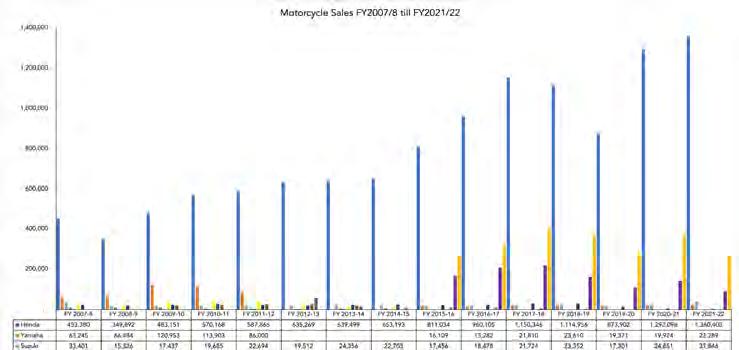
“Once you remove an internal combustion engine from a vehicle, then the fuel tank is also consequently gone. Once you remove a fuel tank from a motorcycle then its appear- ance and shape automatically changes. This is not a problem for higher-end enthusiast motorcycles. However, utilitarian motorcycles will have to be converted to electric scooters or electric mopeds,” the source explains.
“The basic concept behind this is that internal combustion engines require fuel tanks, whilst electric motorcycles require storage for their batteries. Manufacturers have decided to position the battery storage, for now at least, below the passengers feet. The utilitarian motorcycle is thus, automatically reshaped towards a scooter,” the source continues.
And there we have it. One final question, what about the electric motorcycles that do exist in the market? Surely they have managed to avoid obsolescence at the hands of the scooter, right? “Many existing players have tried to replace the engines on their current 70cc and 125cc motorcycles with electric batteries. These are called retrofitted motorcycles. However, these motorcycles are not built for the load to be shifted around like that. This goes against the basic engineering principles upon which these motorcycles were originally introduced. This significantly reduces the safety of the product,” the source points out.
This would also explain why scooters this time around are being imported as semi knocked-down (SKD) kits rather than as completely built-up (CBU) units as they had previously. This would also explain why companies have attached localisation goals to the scooters where there were none previously. There’s probably a lot of bets being made on the market, to see whether things work out or not.
“Anything that mobilises a person is a good thing in my opinion, whether it’s a scooter or a bike,” Irfan says. That’s probably the best note to end on. More mobility for women, interesting bets on the future, and new strategies by old players against the big dog in a market. We’ve been told to watch the space for the remainder of the year, so we imagine it’ll only get more interesting from here on out. n




